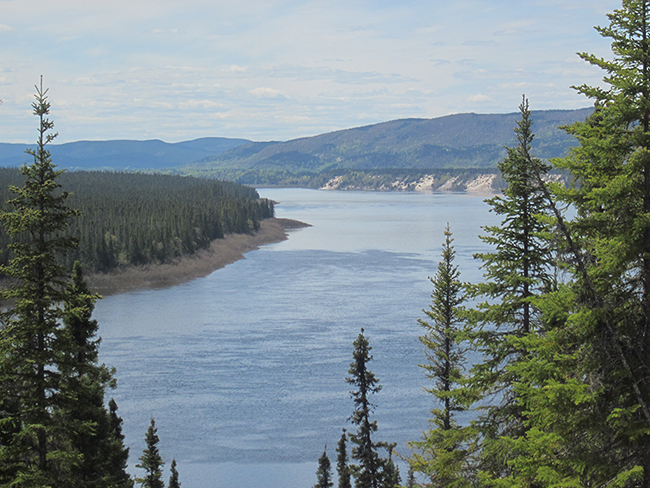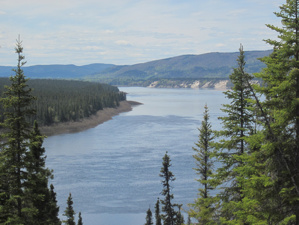Dailycsr.com – 09 September 2015 – The mystery of “neurotoxin methylmercury” increment in the Arctic lakes, as of today still remains to be solved. However, a recent study gives an explanation as to why this compound is present in some of the “most fragile environments” of the world, whereby it has found out that large dams that are situated at a “high altitude” are in the shadow of its risk.
The composition of the “neurotoxin methylmercury” also involves elementary mercury which is poisonous in nature. Nevertheless, when it is in the form of methylmercury, the issue gets even serious as it “crosses the blood-brain barrier”. Moreover, the study shows that the rate at which the buildup of methylmercury is taking place in the Arctic is quite “frightening”.
The mercury gets sourced partly from human emission, like combustion of coal, while partly it comes from “natural resources”. However, the answer to why the mercury gets converted into the “most toxic form” while it refrains from “sinking safely to the ocean floor”, has been disturbing the ecologists. Therefore, the National Academy of Sciences made announcements, whereby highlighting the importance, that an immediate answer to this dilemma needs to solved given the pressing demand of the hour.
In fact, the entire discovery of this danger surfaced when an investigation was carried out to analyze “the impact of the Muskrat Falls hydroelectric dam on the estuarine fjord Lake Melville”. It is also an indicative that this kind of project operation incorporates a cost factor “beyond what has previously been recognized”. The said dam is scheduled to be completed by the end of 2017, while the majority of the affected area will be located “within the Inuit autonomous region of Nunatsiavut”.
An attempt was made in vain by the government of Nunatsiavut to “challenge the dam”, following which the government requested Dr. Elsie Sunderland of Harvard to carry on an investigation of the “potential effects” on the dam which also includes the increment of methylmercury which again increased after a dam was constructed “higher up the Churchill River” feeding the Lake Melville.
Unfortunately, Stephen Luntz reports:
“Neither the federal nor provincial government considered Sunderland’s preliminary findings sufficient grounds to stop the dam, but her research has been scientifically fruitful. Moreover, with both administrations behind the dam up for election in the next three months, the timing of their release could prove electorally significant”.
The astonished Sunderland’s colleague, Dr. Amina Schartup, after testing the waters of Lake Melville remarks:
"We found more methylmercury in the water than our modeling could explain. All of the methylmercury from the rivers feeding into Lake Melville and from the sediment at the bottom of the lake couldn't account for the levels in the water. There was something else going on here."
The recorded concentration levels show that the highest were at “1 to 10 meters” under the water surface, which is a similar pattern observed at the Arctic Ocean. As per Sunderland’s observation, if this kind of scenario arises there is a strong chance that “fluffy organic material gets trapped by strong salinity gradients” as it becomes over buoyant for sinking into the depths yet remains too heavy for floating on top of the surface. Probably, the zooplankton feeding on this compound could generate “methylmercury in the process”. Likewise, mercury increasingly accumulates, instead of “sinking to the seafloor”. In this way, fish mat consume the element which in turn gets trapped in fishing net, thus completing a cycle, which exposes the humans to this damger. In Schartup’s words:
"This system is incredibly efficient at accumulating methylmercury".
Furthermore, Stephen Luntz rings the warning bell with her concluding words:
“Even more worryingly, Sunderland found that when soil from the area becomes saturated, it starts releasing huge quantities of methylmercury. If the dam is built, huge areas will be drowned and Sunderland fears the methylmercury released will make its way to Lake Melville, causing concentrations to skyrocket and endangering indigenous people dependent on food from the lake”.
References:
http://www.iflscience.com
The composition of the “neurotoxin methylmercury” also involves elementary mercury which is poisonous in nature. Nevertheless, when it is in the form of methylmercury, the issue gets even serious as it “crosses the blood-brain barrier”. Moreover, the study shows that the rate at which the buildup of methylmercury is taking place in the Arctic is quite “frightening”.
The mercury gets sourced partly from human emission, like combustion of coal, while partly it comes from “natural resources”. However, the answer to why the mercury gets converted into the “most toxic form” while it refrains from “sinking safely to the ocean floor”, has been disturbing the ecologists. Therefore, the National Academy of Sciences made announcements, whereby highlighting the importance, that an immediate answer to this dilemma needs to solved given the pressing demand of the hour.
In fact, the entire discovery of this danger surfaced when an investigation was carried out to analyze “the impact of the Muskrat Falls hydroelectric dam on the estuarine fjord Lake Melville”. It is also an indicative that this kind of project operation incorporates a cost factor “beyond what has previously been recognized”. The said dam is scheduled to be completed by the end of 2017, while the majority of the affected area will be located “within the Inuit autonomous region of Nunatsiavut”.
An attempt was made in vain by the government of Nunatsiavut to “challenge the dam”, following which the government requested Dr. Elsie Sunderland of Harvard to carry on an investigation of the “potential effects” on the dam which also includes the increment of methylmercury which again increased after a dam was constructed “higher up the Churchill River” feeding the Lake Melville.
Unfortunately, Stephen Luntz reports:
“Neither the federal nor provincial government considered Sunderland’s preliminary findings sufficient grounds to stop the dam, but her research has been scientifically fruitful. Moreover, with both administrations behind the dam up for election in the next three months, the timing of their release could prove electorally significant”.
The astonished Sunderland’s colleague, Dr. Amina Schartup, after testing the waters of Lake Melville remarks:
"We found more methylmercury in the water than our modeling could explain. All of the methylmercury from the rivers feeding into Lake Melville and from the sediment at the bottom of the lake couldn't account for the levels in the water. There was something else going on here."
The recorded concentration levels show that the highest were at “1 to 10 meters” under the water surface, which is a similar pattern observed at the Arctic Ocean. As per Sunderland’s observation, if this kind of scenario arises there is a strong chance that “fluffy organic material gets trapped by strong salinity gradients” as it becomes over buoyant for sinking into the depths yet remains too heavy for floating on top of the surface. Probably, the zooplankton feeding on this compound could generate “methylmercury in the process”. Likewise, mercury increasingly accumulates, instead of “sinking to the seafloor”. In this way, fish mat consume the element which in turn gets trapped in fishing net, thus completing a cycle, which exposes the humans to this damger. In Schartup’s words:
"This system is incredibly efficient at accumulating methylmercury".
Furthermore, Stephen Luntz rings the warning bell with her concluding words:
“Even more worryingly, Sunderland found that when soil from the area becomes saturated, it starts releasing huge quantities of methylmercury. If the dam is built, huge areas will be drowned and Sunderland fears the methylmercury released will make its way to Lake Melville, causing concentrations to skyrocket and endangering indigenous people dependent on food from the lake”.
References:
http://www.iflscience.com


 Arctic Dams Play A Decisive Role On Spreading Mercury Poison Threat – The Government Of Nunatsiavut Fails To Intervene
Arctic Dams Play A Decisive Role On Spreading Mercury Poison Threat – The Government Of Nunatsiavut Fails To Intervene





 Companies
Companies